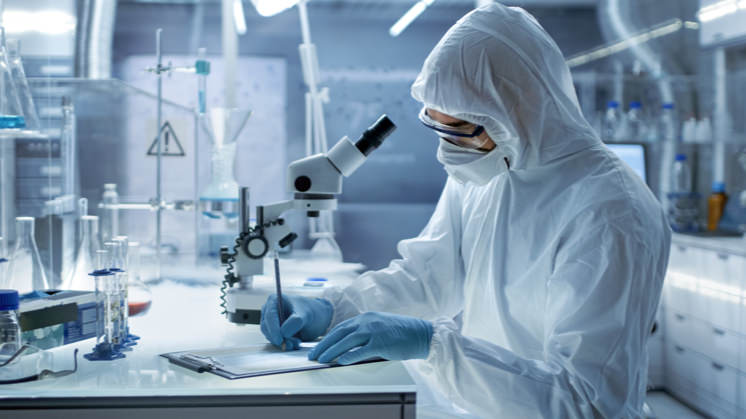Biosafety laboratories, often abbreviated as BSLs, are specialized facilities designed to work with potentially dangerous biological agents like viruses, bacteria, and other pathogens. As the world grapples with emerging infectious diseases and the ever-present risk of biological threats, biosafety labs have become essential in safeguarding public health, advancing scientific research, and ensuring that dangerous pathogens do not inadvertently cause harm to individuals, communities, or the environment.
In this blog post, we will explore the concept of biosafety labs, their different levels, and the role they play in protecting both scientific personnel and the general public from biohazards.
What Is a Biosafety Lab?
A biosafety lab is a controlled environment where researchers can safely study microorganisms and other biological materials that may pose a threat to human health or the environment. These labs are equip with specialized containment equipment and protocols designed to minimize exposure to potentially harmful pathogens, as well as to prevent their release into the outside environment.
The concept of biosafety is defined by a combination of scientific principles and engineering controls that are carefully designed to mitigate risk. These facilities are often classified into different levels based on the type of biological agents they handle, and each level has specific guidelines for laboratory design, operational procedures, personal protective equipment (PPE), and waste management.
Biosafety Levels (BSL)
Biosafety labs are categorized into four different levels, known as BSL-1 to BSL-4, each representing an increasing degree of containment required to safely handle different types of biological agents.
BSL-1: Low-Risk Laboratories
BSL-1 labs are the lowest level of containment and are used for work with microorganisms that are unlikely to cause disease in healthy adults. These organisms are typically well-characterized, non-pathogenic bacteria and viruses, such as E. coli strains or certain yeast species.
BSL-1 labs require basic safety precautions, such as:
- Standard laboratory equipment like sinks and eyewash stations.
- Protective lab coats or aprons, gloves, and eye protection.
- Proper disposal of waste materials.
Because the pathogens studied in BSL-1 labs are not typically harmful to humans, these labs do not require specialized air filtration or containment systems.
BSL-2: Moderate-Risk Laboratories
BSL-2 labs are used for handling moderate-risk pathogens that can cause disease in humans but are typically treatable or manageable. These include pathogens such as Salmonella, HIV, or Hepatitis B. While these organisms can pose a risk to laboratory workers and the community, the risk is considered lower compared to more dangerous agents.
BSL-2 labs require additional safety measures, including:
- Laboratory facilities with controlled access.
- Biological safety cabinets (Class II biosafety cabinets) for procedures that may generate aerosols.
- Enhanced personal protective equipment, such as gloves, lab coats, and face protection when necessary.
- Specific protocols for disinfecting surfaces and safely disposing of contaminated materials.
While the risk is still relatively low, BSL-2 labs must have containment features that limit potential exposure to infectious agents.
BSL-3: High-Risk Laboratories
BSL-3 labs are used to study pathogens that can cause serious or potentially lethal diseases through inhalation, such as Mycobacterium tuberculosis (the bacteria that causes tuberculosis), SARS-CoV-2 (the virus responsible for COVID-19), and anthrax. These pathogens have the potential to spread within the community, so strict containment measures are critical.
BSL-3 labs feature:
- Air-tight rooms with negative pressure to ensure that air flows into the lab, not out.
- Specialized air filtration systems, including HEPA (high-efficiency particulate air) filters, filter out pathogens from the exhaust air.
- Strict access controls and protocols for anyone entering or exiting the lab, including airlock systems.
- Double-door entryways, specialized gowns, gloves, and respiratory protection (e.g., N95 masks or powered air-purifying respirators).
Research in BSL-3 labs is highly controlled and typically involves diseases that are not only serious but also can spread easily if proper safety measures are not followed.
BSL-4: Maximum Containment Laboratories
BSL-4 labs represent the highest level of containment and are used for research involving the most dangerous and exotic pathogens that pose a high risk of aerosol transmission and lack readily available treatments. These include viruses like the Ebola virus, smallpox, and other highly pathogenic, emerging viruses.
BSL-4 labs are equipped with:
- Full-body, air-supplied suits for researchers to wear, which provide an airtight barrier between the lab worker and the pathogens.
- Multiple layers of containment, including airtight seals, negative pressure rooms, and HEPA filtration systems.
- Strict protocols for decontaminating all equipment, surfaces, and waste.
- Constant monitoring and security to prevent accidental exposure or release of the pathogen.
Because of the extreme risks associated with BSL-4 pathogens, these labs are rare, and their operations are subject to intense regulatory oversight.
The Role of Biosafety Labs in Public Health and Research
Biosafety labs play a critical role in public health, scientific discovery, and global disease preparedness. They allow scientists to study pathogens safely, develop new vaccines, diagnostics, and treatments, and respond to emerging infectious diseases in real-time.
For instance, during the COVID-19 pandemic, researchers worked in BSL-3 and BSL-4 labs around the world to study the SARS-CoV-2 virus and develop effective vaccines and treatments. Without such facilities, scientific progress in understanding and combating such a virus would have been significantly hindered.
Additionally, biosafety labs are essential for preparing for and preventing bioterrorism threats. The use of dangerous biological agents as weapons is a major concern for national and global security. The highest-level biosafety labs help detect, identify, and study potential biological threats, ensuring that authorities can respond quickly to mitigate risk.
Conclusion
Biosafety laboratories are an indispensable part of modern science, ensuring that researchers can safely study infectious agents that pose a potential risk to public health. From basic research in BSL-1 labs to the high-security environments of BSL-4 labs, these facilities provide the necessary infrastructure to protect both researchers and the general public from the dangers posed by pathogens.
As the world continues to face new biological challenges, the importance of maintaining robust biosafety systems cannot be overstated. These labs are crucial not only for advancing our understanding of disease but also for keeping us safe in an increasingly complex and interconnected world. Whether it’s a new pandemic, a bioterrorism threat, or the study of unknown viruses, biosafety labs ensure that science can continue to move forward without compromising our safety.




